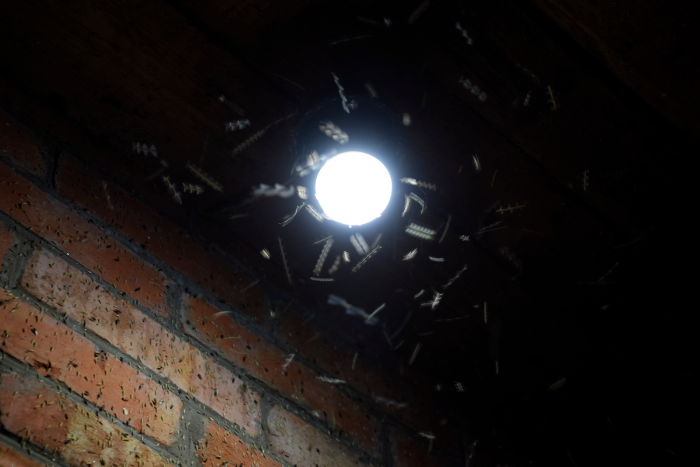Artificial lights are disorienting for insects, which is what causes them to erratically fly around fires and lamps—this is a significant contributor to the decline of insect populations, finds study
Recent research published in the journal Nature Communications revealed the mystery of why insects behave erratically in front of a light source. This study suggests that insects do not fly directly towards the light, but rather try to fly orthogonally to the light source.
Researchers used high-resolution motion capture in the laboratory and stereo-videography in the field to reconstruct the 3D kinematics of insect flights around artificial lights.
They found insects are naturally programmed to fly with their backs towards the light. During the day when the sun is up, this mechanism helps them to fly straight. At night, they use the available natural light sources to maintain their flight direction. This process is called the “dorsal light response”.
According to the study, when insects see artificial light at night, they use it to determine their flight direction, but the heightened brightness of the light source traps these insects. It disorients their flight path causing them to hover around the light.
The dorsal light response is an important mechanism for insects. It helps them find their way and avoid bright lights, which can be harmful to them. Light pollution, the study says, is a significant contributor to the decline in insect populations, which is a threat to biodiversity. Therefore, it is important to understand how artificial light affects insects. This understanding can help us develop artificial light sources that are less attractive to insects, according to the study.
In the presence of an artificial light source, insects lose their ability to fly straight. This is why when the light source is on the ceiling, insects try to fly in circular loops close to the ceiling. When the light source is placed below, the insects try to fly upside down and fall down. When the light source is on a wall, the insects try to fly in vertical loops.
Amit Tiwari is a geologist, Geological Survey of India, Western Region, State Unit: Rajasthan

